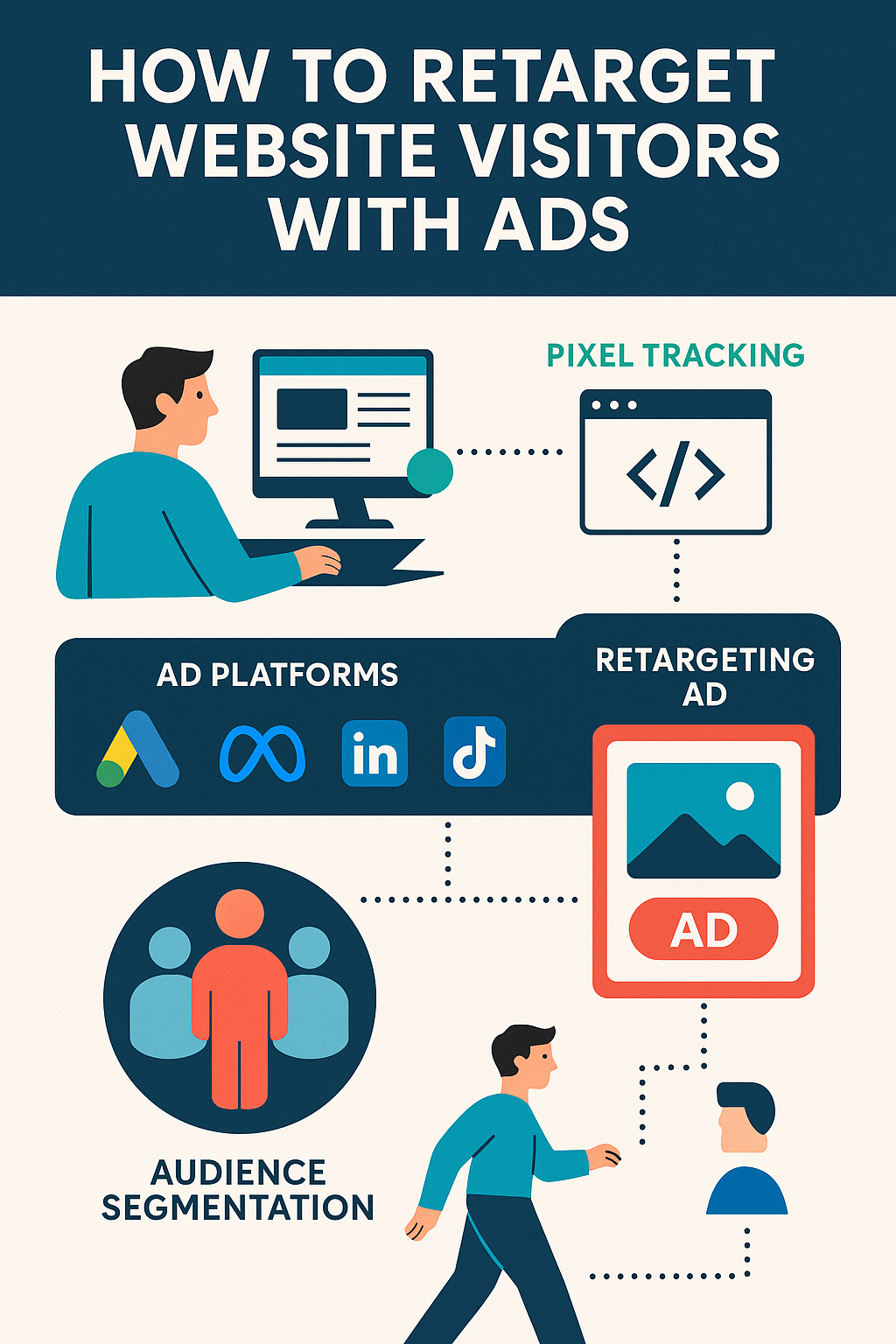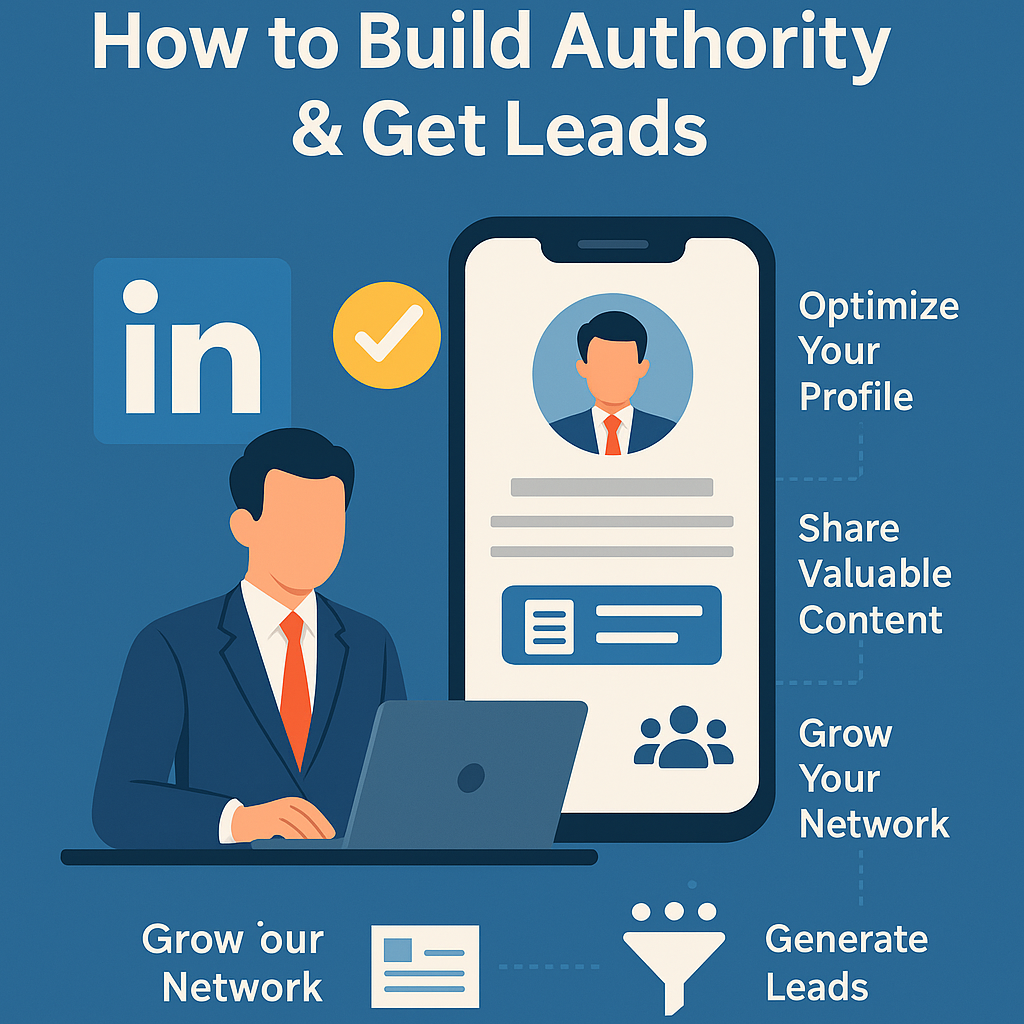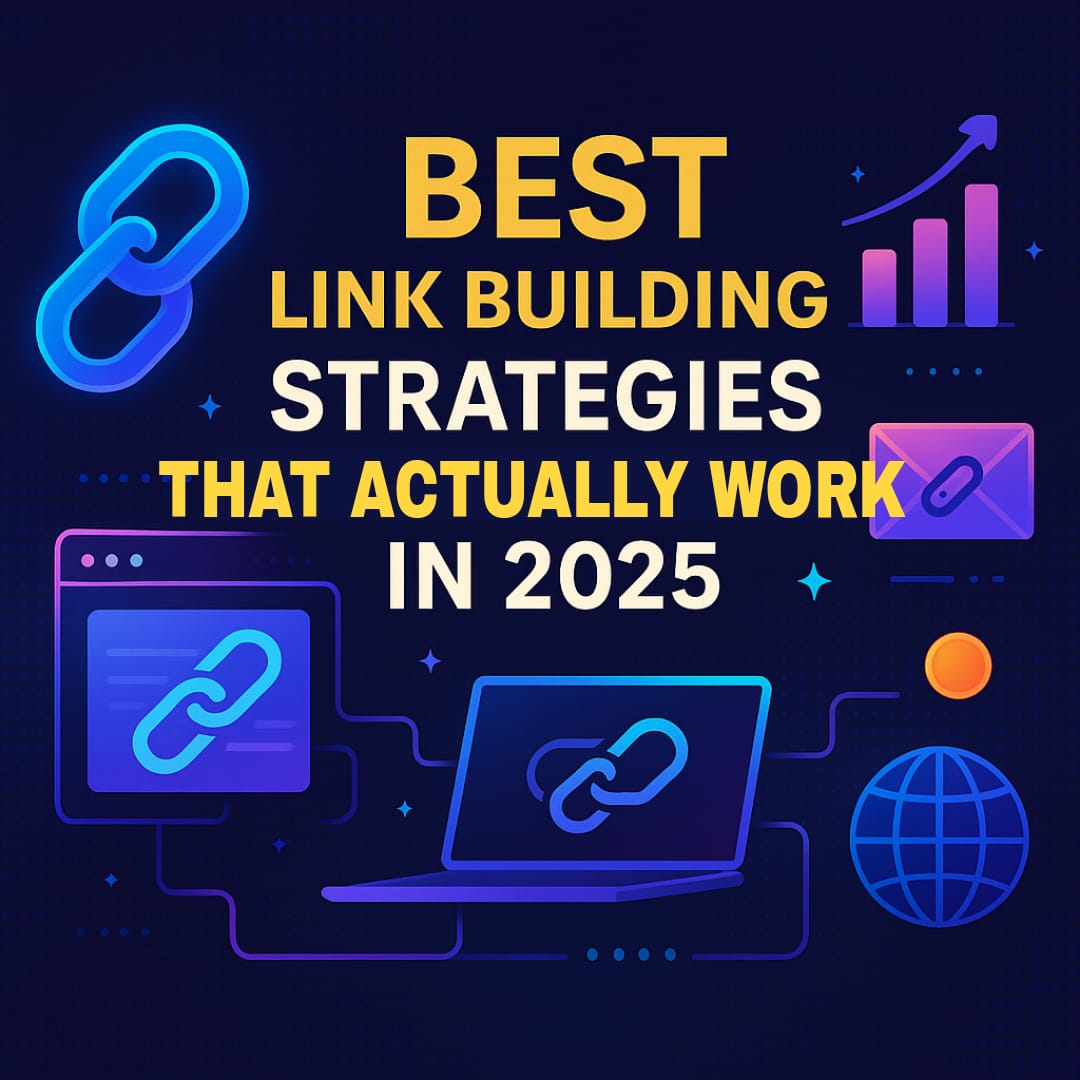How to Retarget Website Visitors with Ads (Complete Guide for 2025)
Table of Contents
Introduction: The Power of Retargeting in Digital Marketing
Have you ever stopped to think about why the exact pair of shoes you saw once online seems to follow you around on every other website you visit? It is most likely due to retargeting.
Retargeting is among the best digital marketing strategies ever created. So a brand can reconnect with potential customers who showed interest in a product (and engaged with the brand), but for whatever reason, didn’t convert–that could be abandoning their shopping cart, bouncing off the page, or just hanging out on the list of products.
Recent statistics show that retargeted visitors are 70% more likely to convert than first-time visitors. In using pulled statistics, what this essentially means is, if you are not leveraging retargeting ads in your eCommerce strategy, you are leaving a ton of money on the table.
This article will cover anything and everything you may want to know about retargeting: what retargeting is, how it works, the best ad platforms, audience segmentation, and campaigns that actually convert in 2025.
1. What Is Retargeting and Why It Works
Retargeting (often referred to as remarketing) is a digital marketing technique that targets users who have already engaged with your brand—whether they visited your website, viewed a product, or engaged with your content on social media.
Retargeting retains the focus on warm leads—individuals who are already familiar with your brand—rather than trying to attract new users.
So why does it work like magic?
- Because familiarity builds trust. Users feel more comfortable and are more likely to purchase from a brand they recognize.
- It quickens the buyer journey. Users may have shown interest in the past and an ad is a gentle reminder of their initial interest.
- It drives conversion rates through personalization. You can build ads based on the actual pages or products users viewed on your site.
It’s like a friendly reminder: “Hey, you liked this item. It’s still available.”
The Different Types of Retargeting
There are two primary retargeting strategies: pixel-based retargeting and list-based retargeting.
- Pixel-based retargeting is when browser cookies are used to track visitors to your site and show them ads later.
- List-based retargeting is when contact lists (email lists, app user information, etc.) are used to show targeted ads to known users.
Pixel-based retargeting is the preferred strategy among marketers, as it responds to user behavior in real-time.
2. How Retargeting Ads Actually Work
This is a simple yet brilliant mechanism.
When someone visits your website, a small code snippet (a pixel) is stored in their browser. This pixel will track the actions they take on your site which pages they visited, which products they viewed and for how long.
Later, when that same person browses other sites or social media, the ad networks recognize the cookie or pixel, and then display ads for your brand to them.
Here is how it works in steps:
- A user visits your site.
- Your tracking pixel (e.g., Facebook pixel / Google Tag) stores information about that visit.
- They leave your website without converting.
- Your ad campaign is triggered and they see ads for your products on other sites.
- The user clicks on the ad and comes back to convert.
This is digital déjà vu — but purposeful!
3. Platforms to Run Retargeting Ads
There is no one-size-fits-all “best” platform. The right platform for you goes hand-in-hand with where your audience spends its time. Here is the top-level tier:
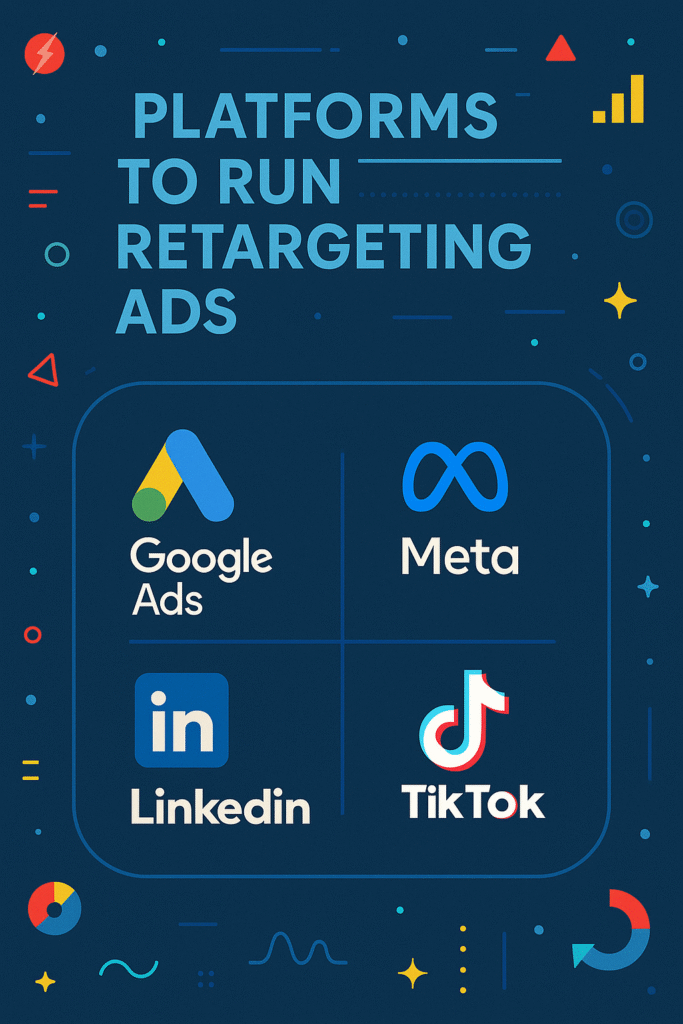
a. Google Ads (Display & Search Network)
Google has such far-reaching, incredible capabilities that you can retarget users on millions of websites, including YouTube.
- For visual retargeting, you can use Display Ads.
- For intent-based retargeting, use Search Ads to show ads when they search again.
b. Meta Ads (Facebook & Instagram)
Meta has a scalable retargeting engine.
- You can retarget users based on website visits, engagement with your posts, or actions in your app.
- Ideal if you are an eCommerce or lifestyle brand.
c. LinkedIn Ads
Ideal for B2B retargeting.
Retarget users that visited your company website or engaged with content on your LinkedIn page.
d. TikTok Ads
Fast-growing. TikTok has now offered pixel-based retargeting, mainly for Gen Z audiences.
e. Pinterest & Twitter (X)
Perfect for brands that are visually driven or rely on thought leadership and trends.
Pro Tip:
Layering multiple platforms options makes optimal sense. For example, if you use Google Display Ads + Meta Ads, both can be combined to cover the entire funnel plus retargeting.
4. How to Create a Retargeting Campaign (Step-by-Step)
Let’s get practical, here’s how to get started on your first successful retargeting campaign.
Step 1: Install the Pixel
You need to put the retargeting pixel on your website. This is essential.
- For Google: You will use Google Tag Manager.
- For Facebook: You will need to add Meta Pixel either manually or through your site platforms like Shopify/Wix/Word Press.
Step 2: Define Your Audience
You will want to segment your audience depending on behavior, such as:
- Someone who visited a product page, but didn’t purchase.
- Someone who added an item to their card, but abandoned.
- Someone who read a blog post for more than two minutes.
- Existing customers – who can be upsold or cross-sold to.
Step 3: Create Compelling Ads
Keep your ads on point, and consistent with what the user has seen previously.
Tips:
- Use dynamic ads, this auto shows the product user viewed.
- Scabacity, has overlays like “Almost gone”/ “Limited time offer”.
- Always include a call-to action (CTA).
Craft your ad copy like a mini headline — every word should make users want to click. If you struggle with writing click-worthy ads, check out our guide on How to Write Headlines That Get Clicks.
Step 4: Choose the If Right Timing
Timing is important.
- For example: within 24 hours; you would want to give a friendly reminder.
- On day 3-7, you can add a level of scarcity with a discount.
- After day 14, ads can be re-engagement ads, meaning you will have a reason to associate your ad with the product offering, for the new product or an update.
Step 5: Monitor and Optimize
Monitor relevant metrics, which include click-through rate (CTR), cost per click (CPC), and return on ad spend (ROAS).
Experiment with various ad creatives and time windows to optimize your performance.
5. Audience Segmentation: The Secret Sauce
Audience Segmentation: The Secret Sauce
The true power of retargeting is segmentation. Not everyone visiting your site should receive the same ad.
Here’s how to do segmentation intelligently.
- Cart Abandoners: Give them a discount code or a testimonial.
- Product Viewers: Highlight the benefits of the product they viewed, along with any reviews.
- Homepage Visitors: Use brand awareness ads to establish trust and familiarity with the brand.
- Content Readers: Offer them lead magnets or newsletters.
Advanced marketers create exclusion lists — people who have purchased should not see an ad for “Buy Now” again (which is a waste of your budget).
Smart segmentation = better conversion rates + less ad spend.
6. Common Mistakes to Avoid
Retargeting could create negative outcomes by doing it wrong. Here are common life experience pitfalls:
- Overdoing It: There is no reason to hammer your users with ad after ad after ad. Use frequency caps.
- Forgetting mobile: Most retargeting is modile, make sure your landing page loads quickly.
- Not excluding converters: Don’t waste money advertising to people who have already converted and bought.
- Using generic creatives: Keep your ads more personalized and contextual.
Retargeting is precision marketing – not a digital megaphone.
7. Future of Retargeting: What’s Changing in 2025
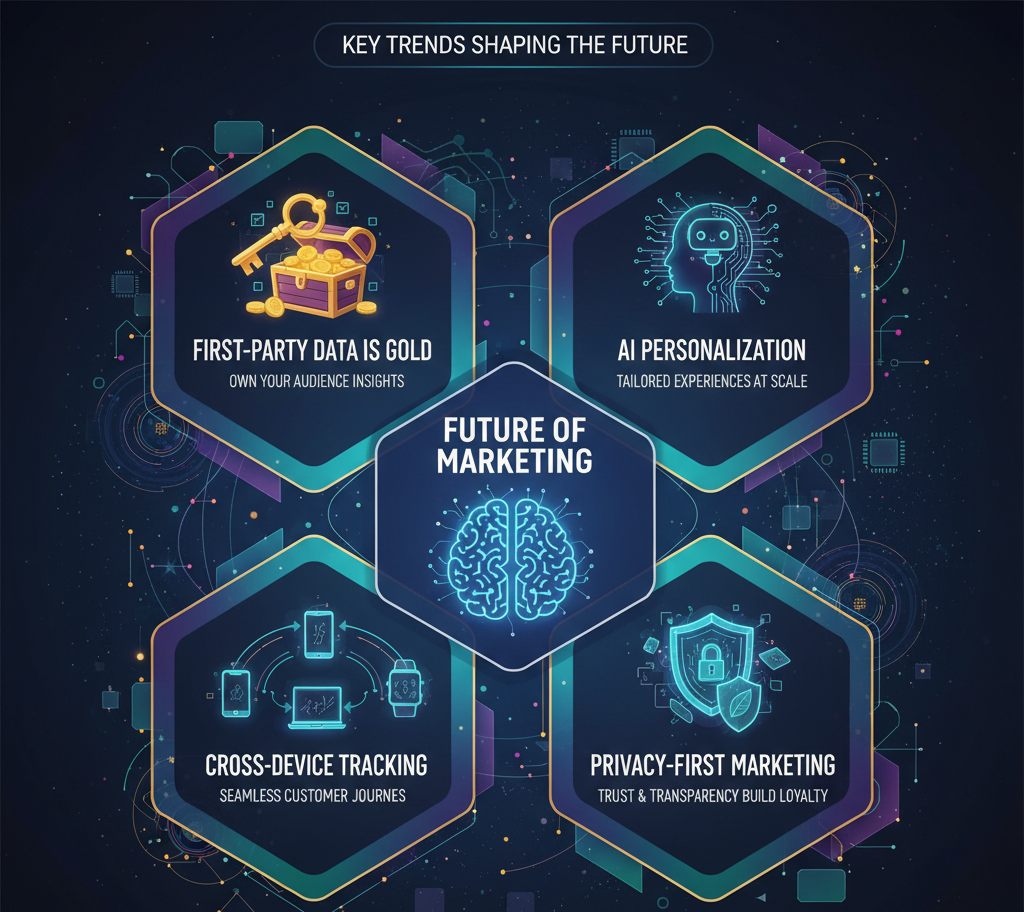
Privacy changes, cookie changes, and new AI-driven advertising platforms are changing the nature of retargeting.
Key trends shaping the future of retargeting:
- First-party data is king. Brands are gathering user data in ethical ways as a way to replace third party cookies.
- AI personalization. New machine learning algorithms are deciding ad timing and creative for us.
- Cross device tracking. Platforms are figuring out smarter ways to connect user behavior across channels.
- Privacy-first marketing. Consent-based data tracking is creating more restrictive compliance with new regulations like GDPR and CCPA.
Always respect user privacy when collecting data. Learn more about compliance at GDPR.eu.
The next generation of retargeting will depend on predictive behavior modeling without cookies — using AI to predict what a user wants even before the search.
Conclusion: Retargeting Is About Relevance, Not Repetition
Retargeting is not simply about pursuing users across the web — it provides relevance. When executed correctly, it closes the gap between interest and purchase by reminding users why they showed interest in your brand or product in the first place.
Brands won’t be winning the advertisement game in 2025 unless they master retargeting through personalization, AI-driven automation, and ethical data collection.
If you want to stretch your marketing budget further and convert faster — start retargeting yesterday.
Just like link building strengthens your SEO presence, Best Link Building Strategies That Actually Work in 2025 can help you build authority alongside your retargeting campaigns.
For more such articles click here.
FAQs
-
What is the proper amount of retargeting advertisement budget?
Start small; around 10-20% of your total ad budget and build up from there based on ROI.
-
Can you retarget users who didn’t accept cookies?
No, you can’t track those users legally and technically. You will need to shift focus towards the collection of first-party data.
-
How long should retargeting ads be run?
Usually, campaigns run for a period of 30-90 days. You should determine when to adjust based on frequency and ad fatigue.
-
Is retargeting only for eCommerce?
No way. It can work for SaaS, services, blogs, and personal brands.
-
What is the difference between retargeting and remarketing?
Although they are often used interchangeably, technically, retargeting is used in terms of paid ads, while remarketing is usually an email marketing follow-up
-
How can I assess the performance of my retargeting campaign?
You can analyze metrics like click-through rate (CTR), conversion rate, and return on ad spend (ROAS). We would expect a successful campaign to demonstrate a significant decrease in cost per acquisition (CPA) and an improvement in returning visitors.
-
Can I use retargeting on someone who visits my social media accounts?
Yes. Platforms, like Meta, LinkedIn, and TikTok — among others — allow you to retarget people who are interacting with your posts, videos, or ads even if they do not visit your website.
-
How long should I keep someone in my retargeting audience?
That depends on the length of the sales cycle. For fast-turning consumer items, I have seen success in keeping an audience for 7-14 days. For high ticket items or a B2B services, I have found success with a window of 30-90 days duration.
-
What is the difference between dynamic versus static retargeting ads?
Dynamic ads show each user products or services they have interacted with without you having to create ads for each product or service. Static ads are the same ad for every user. Dynamic ads typically perform better than static ads simply because they are targeting ads to users who have interacted with your website.
-
Do retargeting ads help drive brand awareness?
Yes! Even if someone does not click on your ad, the repetitive exposure of your brand strengthens and helps develop the identity of your brand. Overall, the more people see your business, the more friends will consider you for future needs.
